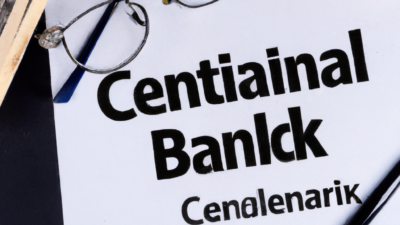In the complex world of economics, few entities wield as much influence over a nation's financial health as its Monetary Policy Committee (MPC). These committees, often shrouded in mystery to the general public, play a pivotal role in steering the economic course by making critical decisions about interest rates, money supply, and inflation targets. But who exactly are the individuals that comprise these influential bodies? What qualifications and experiences do they bring to the table, and how do their decisions impact everyday life? In this article, we delve into the intricate workings of the Monetary Policy Committee, shedding light on its members, their responsibilities, and the profound effect of their policy decisions on the economy at large. Whether you are a seasoned economist or a curious citizen, understanding the MPC is key to grasping the broader economic landscape and its implications for your financial well-being.
Certainly! Below is a suggested content outline for an article covering the topic "Who are the Monetary Policy Committee":
The Monetary Policy Committee (MPC) is a group of officials responsible for setting the direction of monetary policy, primarily through the adjustment of interest rates and other financial measures, to achieve macroeconomic objectives such as controlling inflation, managing employment levels, and fostering economic growth. The composition and specific roles of MPC members can vary depending on the country, but typically, the committee includes a mix of central bank officials and external experts.
In the United Kingdom, for example, the MPC is part of the Bank of England. It consists of nine members: the Governor of the Bank of England, three Deputy Governors (for Monetary Policy, Financial Stability, and Markets & Banking), the Bank’s Chief Economist, and four external members appointed by the Chancellor of the Exchequer. These external members are often academics or professionals from the financial sector who bring diverse perspectives to the committee. The MPC meets regularly, usually once a month, to review economic data and make decisions on interest rates and other policy measures.
In the United States, the equivalent body is the Federal Open Market Committee (FOMC). The FOMC includes twelve members: the seven members of the Board of Governors of the Federal Reserve System, the President of the Federal Reserve Bank of New York, and four of the remaining eleven Reserve Bank presidents, who serve one-year terms on a rotating basis. The FOMC holds eight scheduled meetings per year to assess the economic conditions and determine the appropriate stance of monetary policy.
The primary objectives of these committees are to ensure price stability and support maximum sustainable employment. They achieve these goals by influencing short-term interest rates, which subsequently affect broader financial conditions and economic activity. The decisions made by the MPC or its equivalents are crucial as they can impact inflation rates, currency strength, and overall economic health.
Transparency and accountability are key aspects of the MPC's operations. In many countries, the committee's decisions and the rationale behind them are communicated to the public through minutes of meetings, reports, and press conferences. This transparency helps manage market expectations and enhances the credibility of monetary policy.
In summary, the Monetary Policy Committee plays a vital role in steering the economy by making informed decisions on interest rates and other monetary tools. Its composition usually includes a blend of central bank officials and external experts, whose collective expertise helps navigate complex economic landscapes to achieve stable and sustainable growth.













